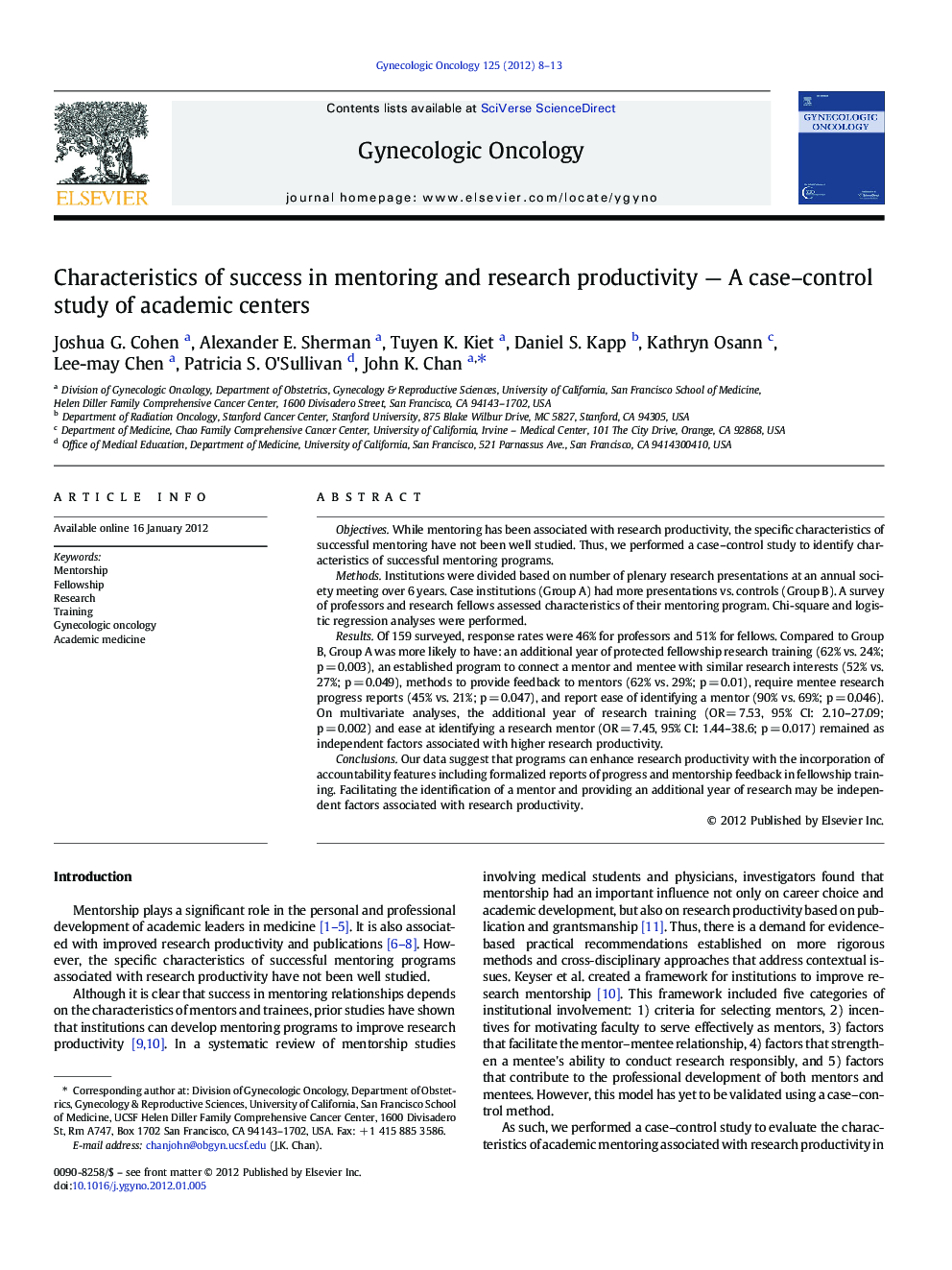| Article ID | Journal | Published Year | Pages | File Type |
|---|---|---|---|---|
| 3945236 | Gynecologic Oncology | 2012 | 6 Pages |
ObjectivesWhile mentoring has been associated with research productivity, the specific characteristics of successful mentoring have not been well studied. Thus, we performed a case–control study to identify characteristics of successful mentoring programs.MethodsInstitutions were divided based on number of plenary research presentations at an annual society meeting over 6 years. Case institutions (Group A) had more presentations vs. controls (Group B). A survey of professors and research fellows assessed characteristics of their mentoring program. Chi-square and logistic regression analyses were performed.ResultsOf 159 surveyed, response rates were 46% for professors and 51% for fellows. Compared to Group B, Group A was more likely to have: an additional year of protected fellowship research training (62% vs. 24%; p = 0.003), an established program to connect a mentor and mentee with similar research interests (52% vs. 27%; p = 0.049), methods to provide feedback to mentors (62% vs. 29%; p = 0.01), require mentee research progress reports (45% vs. 21%; p = 0.047), and report ease of identifying a mentor (90% vs. 69%; p = 0.046). On multivariate analyses, the additional year of research training (OR = 7.53, 95% CI: 2.10–27.09; p = 0.002) and ease at identifying a research mentor (OR = 7.45, 95% CI: 1.44–38.6; p = 0.017) remained as independent factors associated with higher research productivity.ConclusionsOur data suggest that programs can enhance research productivity with the incorporation of accountability features including formalized reports of progress and mentorship feedback in fellowship training. Facilitating the identification of a mentor and providing an additional year of research may be independent factors associated with research productivity.
► Case control study to evaluate factors for research success of fellowship programs. ► Mentorship programs with accountability features can enhance research productivity. ► The extent of protected research time is also an important factor.
